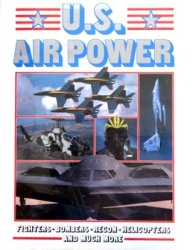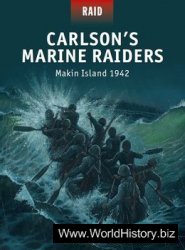Partly because of his missing artillery, and partly because he wanted to bring maximum firepower to the front, Guderian placed his tanks and 8.8 cm flak guns to fire across the river, which, at some places, was no more than 66 yards wide. The French gun positions, deep-set into the thick concrete of the pillboxes, gave adequate protection against most bombs and plunging fire. But gunners using high-velocity missiles, with their very flat trajectory, could get lucky shots right into the emplacements. Since the success of such shooting against Polish fortifications at Nikolai, the German gunners had practiced this technique.
The Sedan sector that day was granted the major part of the Luftwaffe’s resources, which was a considerable force. In spite of urgent pleas that the French air force oppose this, the defenders were told that they could expect no air support until the next day. The French army commander was not dismayed or angry. He commented that it was as well that the men had a “baptism of fire.” No such baptism was to be given to the Germans. The 55th Infantry Division, defending the line of the Meuse to the west of Sedan and on the receiving end of a terrible German bombardment from all calibers of gun and relays of dive bombers, was now ordered to ration its use of shells.
Fixed-position artillery bombardment, using map references to familiar targets, was an aspect of warfare at which the French Army excelled. As Guderian closed his men to the river for the assault, French artillery observers reported concentrations of hundreds of tanks, in sight and in range. The rationing of shells remained in force, for the French commander still believed that the assault could not take place for several days as the Germans would need to concentrate more artillery.
That the Germans were short of artillery was evident to the defenders, but only slowly did they realize that the bombing plane was to be its substitute. The value of the bombing plane was still a matter of dispute among theorists, and even its staunchest advocates could not with any certainty predict the role it would play. It was not the bomber’s destructive power against assigned targets which made it a decisive weapon, but rather the by-product of destroyed transport and communications that had paralyzed the Polish Army and was now about to paralyze the French chain of command. A second byproduct was no less important. In keeping with German theories of frightening the enemy, Stuka bombers, their wings strengthened to withstand the strain of pulling out of a steep dive, were equipped with screaming devices on both airframes and bombs. The shrill threat of such attacks made the defenders run for cover. Men taking cover do not observe, train guns, or shoot. If they take cover often enough for the process to become continuous, they lose the will to fight altogether.
The contribution that the dive bomber made to German victory cannot be too strongly emphasized. One British officer described the effect of dive bombing on soldiers of the BEF fighting alongside the French after an attack that did no more than wound ten men and destroy three trucks: “The chaps were absolutely shattered. I think afterwards the officers and a few sergeants got up and tried to get things moving but the chaps just sat about in a complete daze, and one had to almost kick them to get them moving to the next positions... on this first occasion the effect was truly fantastic”42
It was to make use of this effect that Nehring, Guderian’s chief of staff, suggested a technique of air attack that, while adding nothing to the bomber’s destructive power, was to make a vital contribution to German victory. He wanted dive bombers sent in in relays, rather than in one massive onslaught, and to make diving passes over their targets even after their bombs were gone and to continue to do so until the next relay of aircraft arrived.
In air support, in firepower, and in the quality of its leadership, the German attack at Sedan was very different from the more opportunistic attacks to the north. It was this massive armored thrust that would strike deep under the Allied armies moving to the north. And, although the philosophy of blitzkrieg was the reinforcement of success, the nature of the Ardennes roads ruled out any chance of switching this attack to some lucky crossing downriver.
At Sedan, where the defenses on French soil had been better prepared, the attack was similarly detailed. The three crossing places were dictated by the terrain and German assault troops had trained on similar ground and were provided with aerial photos and excellent maps of the French defense line, detailed down to individual blockhouses. Not that those pictures could have comforted the men of lO. Pz. Div infantry and engineers who waded knee-deep through flooded meadows before reaching the edge of the river where their rubber boats could be launched, for the French on the forested hill of Marfee were ideally situated to decimate the attackers.
The lO. Pz. Div infantry on the left flank suffered heavy casualties, but the fact that they reached the French emplacements alive, captured them, and continued as far as the Marfee heights was as much a tribute to the Luftwaffe as to the assault troops. Sealed into their pillboxes like the Belgians in Fort Eben Emael, the French were vulnerable to determined infantry attack. For there is no weapon or vehicle of war that is not vulnerable to some other device or warrior. Just as the French tanks at Wastia had withdrawn rather than remain after dark without infantry support, so did the French pillboxes at Sedan require the “interval troops” to protect them. Winkling action at close range by infantry with explosives, hand grenades, and flamethrowers can knock out even the strongest emplacement, smashing the periscopes and blocking the gun slots and air intakes. Here at Sedan the “interval troops” assigned to protect the French emplacements were not in position; they were taking cover from the interminable bombing runs of the Luftwaffe.
Guderian’s XIX Panzerkorps was assigned to the most vital region of the whole German invasion, and l. Pz. Div was at the most vital sector of Guderian’s attack. This division, its personnel Saxon and Thiiringen, had fought well in central Poland, and for its present task
Guderian’s Corps Crosses the Meuse
FRENCH 9TH ARMY
(CORAP) .

3RD N. AFRICAN DIVISION
FRENCH 2ND ARMY
(HUNTZIGER)
7TH ARMY 213TH INF. REG.
4TH ARMY 205TH INF. REG.
MAP 17
It was reinforced with artillery battalions from the panzer divisions on either side of it as well as by the corps artillery and some extra combat Pioniere too. At the very front of the division’s attack there was the most prestigious unit of the German army—Grossdeutschland.
The Infanterie-Regiment Grossdeutschland had until June 1939 been Wachregiment Berlin. This ceremonial unit supplied guards of honor in the capital and for Hitler’s bodyguard, and each province in Germany sent its best soldiers to serve in it for a few months. Each company retained its regional character, and by tradition the home province provided it with the beer, sausages, and cheese of that locality. Now the regiment had been renamed and put on a permanent basis, but its prestige was retained. (The Grossdeutschland Regiment was not an SS formation and was in no way connected with the 55-Regiment Deutschland, one of the earliest SS field formations.)
Grossdeutschland had been given only rear-area duties during the Polish campaign. But now, its training finally completed, it was positioned at the point of the most important attack of the whole campaign in the west. They crossed the Meuse at the western edge of Sedan. Their sector was about 88 yards wide, and they advanced across open ground to Glaire village, while every weapon the Germans could find, from 2 cm flak to the howitzers of the reinforced artillery batteries, hit the French positions. The ferocity of the German assault supported the advance units as they spread out through the village of Glaire with its vegetable gardens, ramshackle tool sheds, and barns where the concrete pillboxes were hidden to the railway and beyond that to the main road.
Without a pause the infantry ran, ducked, and dodged across the flat land and across the road and finally up the green slopes beyond. By 7:30 p. m. on 13 May, infantry of Grossdeutschland were on the Marfee heights, together with infantry of 1 .Pz. Div, which had followed them. As it began to get dark, they were joined by men of lO. Pz. Div, who had fought their way over the swampy land to the southeast of Sedan. It was the classic pincer tactic.
Today Glaire is still a flat area of vegetable gardens and ramshackle buildings and the rubbish dump of Sedan. The hazards of what must have seemed a long, long walk across this area to the west of Sedan are still obvious to anyone who turns off the highway and wanders down to the Meuse and along it to the big factory on the northeast bank where, that afternoon even as the first assault began, engineers were busy assembling the sections of a pontoon bridge. The flat land that endangered the infantry also exposed the bridging units to the same sort of fire. Yet almost any risk was worthwhile, for here at Glaire was the axis of the Sedan attack. It was this bridge which would carry almost the whole XIX Panzerkorps across the Meuse, as well as the motorized infantry following them.

MAP l8
The German engineers more than fulfilled expectations: the first ferry was assembled within thirty-eight minutes. By midnight, a pontoon bridge of 16-ton capacity was across the Meuse at Glaire.
The right-hand prong of Guderian’s three-division attack was led by 2.Pz. Div, Guderian’s old division. It had taken part in the annexation of Austria under his command and had stayed there so long that

It had earned the nickname of the “Vienna Division,” and by now many of its men were Austrian recruits. Deprived of its artillery and snarled up in traffic jams around Bouillon, 2.Pz. Div began arriving at its jumping-off point only as zero hour approached that afternoon of 13 May. It was sent'straight into battle.
Like its neighboring assault forces, 2.Pz. Div found itself in flat
Exposed country, facing gun emplacements on ground that rose steeply on the south bank of the river. But 2.Pz. Div was not ordered to move toward the high ground of Marfee woods for which the other two divisions were heading. This right-hand attack was to go only to the top of the low hills that faced it and then swing due west, trying to find a way between the French 55th Infantry Division that faced them and the 102nd Fortress Division that continued the defense line of the Meuse in the northwest. For those two divisions were each part of a different French Army, and such a place of junction is always vulnerable to attack. In this case, the weakness was compounded by the fact that General Corap had put a weak division on the extreme flank of his Ninth Army, while General Charles Huntziger had put a division of reservists on the adjoining flank of his Second Army. It was a formula for disaster and 2.Pz. Div was its catalyst.
The immense effort of the Grossdeutschland and l. Pz. Div on the central sector of this front helped the 2.Pz. Div units on the right flank. They gained a hold at a place where some of the French defenses were still unfinished. Noticing wooden scaffolding, where even the foundations had not been poured, one German soldier remarked, “Astonishing these Frenchmen! They have had now nearly twenty years to build their lines of defense. . .” For that German, nothing could have been more important than building defenses. For the French there were many other things to do, which might have been a token of their higher aspirations rather than lower ones.
As noted above, the French 55th Infantry Division was a B-class unit. Of its 450 officers only twenty were regulars. Considering how many of them were elderly civilians, they fought well against the finest soldiers Germany could muster and what Guderian had promised would be “almost the whole German air force.”
During 13 May, the screaming of the Stukas, the broken communications, the low morale, and the lack of infantry protection for the blockhouses all contributed to the gains the Germans made on the south side of the river. It was at ten minutes past five in the afternoon, when the German assault had been going on for a little over an hour, that a message from 55th Infantry Division reported that they had lost contact with the infantry on their left. A gap had opened between the French Ninth and Second armies, and it was never to be closed.
Yet it was not in this gap between the French armies that the first stone was dislodged in the landslide of disaster. It was an artillery battery commander, in the village of Chaumont, who, at half past six on that fine summer’s evening, reported that German tanks had got as far as the heights of Marfee. It was quite untrue, but anyone in-
Dined to dismiss the report as hysterical had to think again when from Bulson, a little way to the south of Chaumont, an artillery colonel reported—also prematurely—to his corps artillery commander that fighting was so near his command post that he must withdraw or be encircled. The corps artillery commander—himself about 5 miles away from the fighting—decided that it would be prudent to pull back his own command post. None of these artillery officers got verification of the reports.
The 55th Infantry Division command post was just south of Bulson. Its divisional commander had just ordered a battalion to support the defenders of the Marfee heights and was beginning to reestablish communications with his neighbors, when down the road came “a wave of terrified fugitives.” There were gunners and infantry, officers mixed with men, some on foot, some with transport, some insisting that they had orders to withdraw and others just running for their lives. All agreed that there were German tanks at Bulson.
This was the greatest tank victory in all the records of warfare. Several times tanks had gained a victory without firing a shot, but now they had routed an enemy without even going into action. For Guderian had not yet managed to get his tanks across the Meuse. Any tanks the panicking soldiers had seen were French tanks. It was ironic that the panic had begun among artillerymen—the primary antitank weapon—of a division that had double its normal artillery complement. And they were men of an army that had instructed them throughout their military careers that tanks had no independent value and no function but the support of infantry. The tank, like the Stuka, was more fatal to morale than to men, as neither of these weapons caused significant battlefield casualties, the tank no more than 5 per cent of them. It was the idea of the tank that was so effective, and that is why the lightweight PzKw I and PzKw II tanks could prove as effective on the field as the heavier models.
Faced with a torrent of soldiers hurrying from the fighting, a French general and his staff blocked the road with trucks to halt them. But the mob was not even slowed. Some did not stop until they reached Rheims, 60 miles away. And every man who fled had his story ready. Combining the pleasures of delivering bad news with a zeal for conversion, they told of tanks and Stukas by the thousand, and their numbers grew as the story was repeated.
Now even the divisional commander sought permission to move his command post to the rear. Still without any proper verification, the corps commander agreed. And so it was that the 55th Infantry Division changed from an effective fighting force to a routed mob.
Front-line infantry who doubted that the artillerymen had already fled had only to listen to the lessening of the fire from them. Officers who doubted that there was a general withdrawal had only to send a messenger to the command posts and find them abandoned.
It says a great deal for the courage and morale of France’s 213th Infantry Regiment that they continued to make their way toward the front through the tidal wave of the routed 55th. Even so, the consensus of opinion about German tanks “just up the road” caused them to halt when darkness fell. And so it was with the other infantry regiment and two battalions of tanks that made up the corps reserve. All of them had been put under the 55th division commander, General Lafontaine, for the purposes of counterattack. The dawn attack which he had ordered for 14 May was to be in two prongs with tanks in front of infantry for each prong. Coming up as fast as they could were the strategic reserves: the 3rd Armored Division and the 3rd Motorized Division. The 71st Infantry Division, to the right of the routed 55th, were holding firm. A bombing attack upon the German positions was requested for that night.
In spite of the rumors, Guderian had not managed to get any tanks, artillery, or even antitank guns across the river by the time darkness fell on 13 May. The bridgehead was little more than 5 miles wide and 5 miles deep, and a small tank unit could have wiped it out with comparative ease.
It was the time factor that surprised and defeated the French. Not only did the French deploy slowly, but they did not believe that the Germans could move any faster. Even the “impassable” nature of the Ardennes was a conclusion based on the difficulties of advancing heavy artillery through that region, a factor the Germans were able to ignore by substituting bombing aircraft. And nowhere during the battle did the Germans make such good use of time, and the French squander it, as at Sedan during the night of 13/14 May.




 World History
World History









